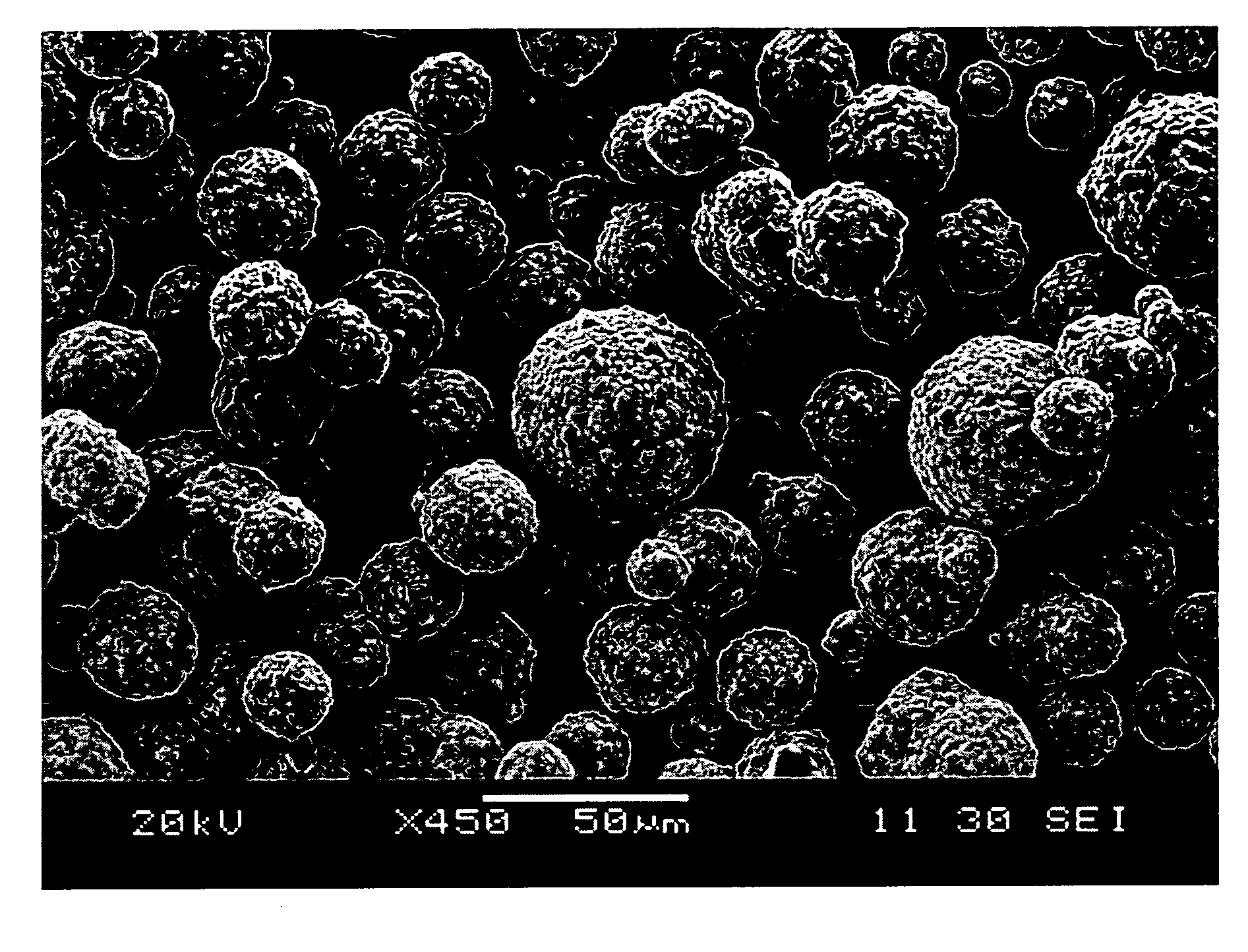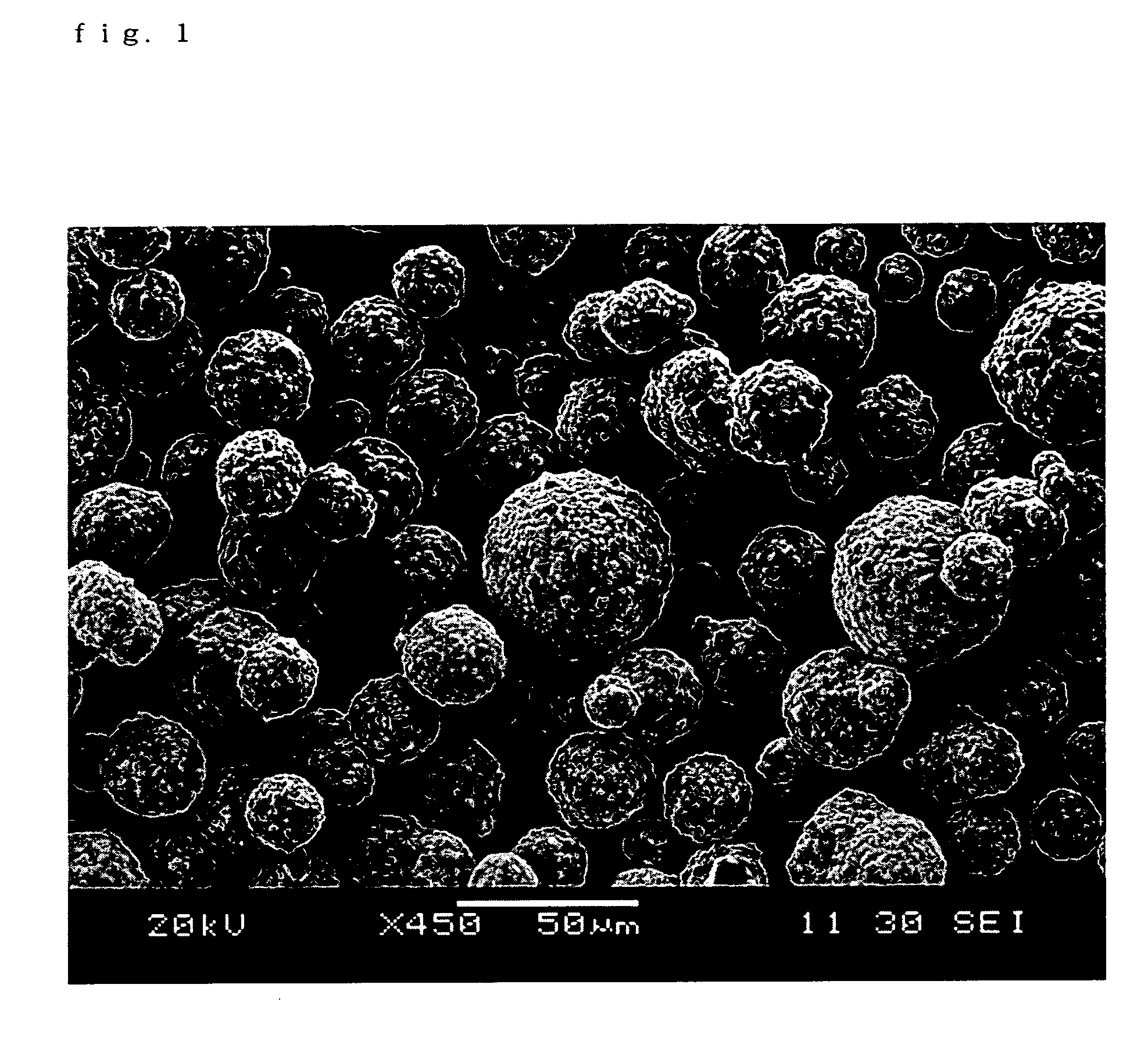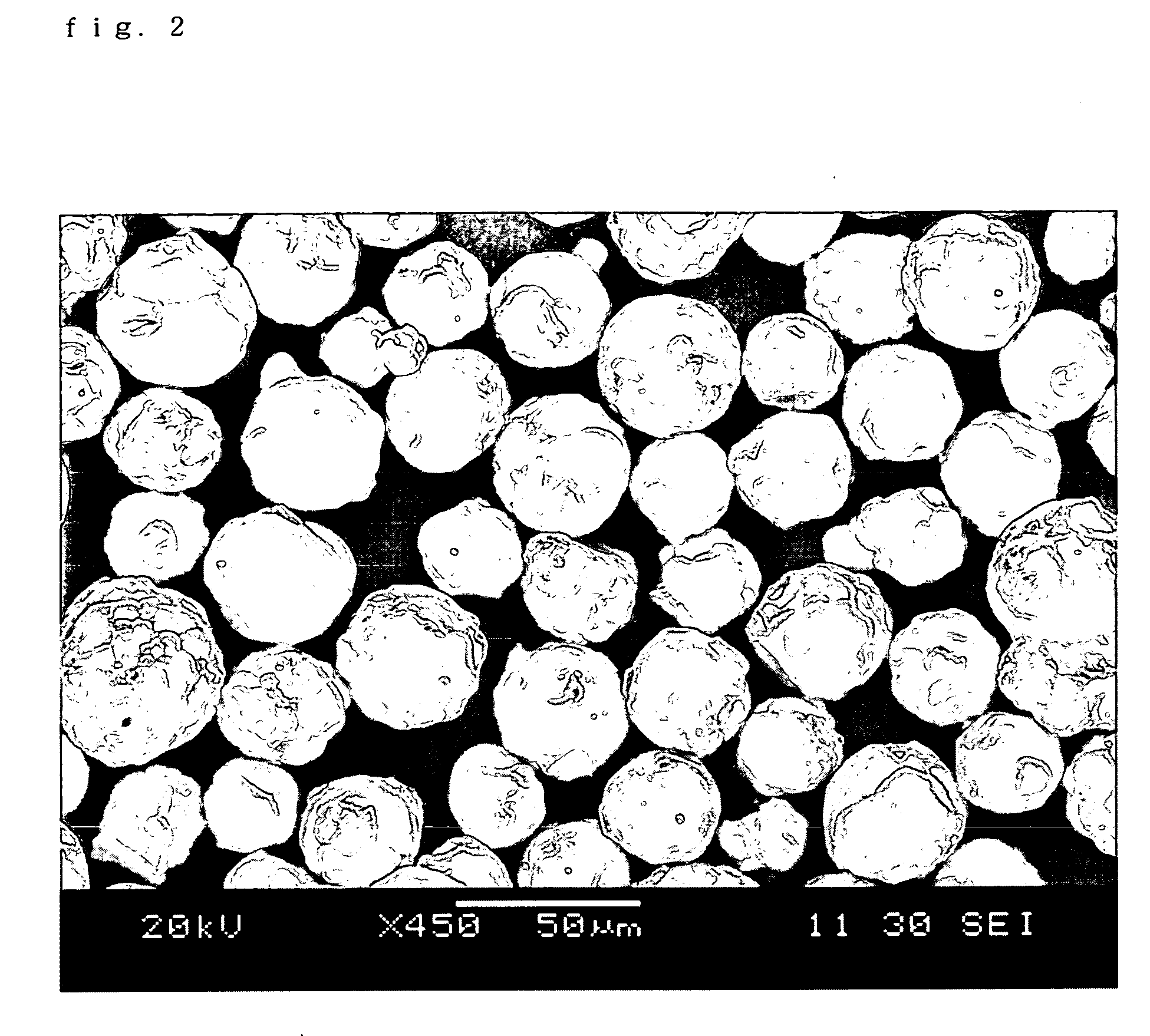Ferrite carrier core material for electrophotography, ferrite carrier for electrophotography and methods for producing them, and electrophotographic developer using the ferrite carrier
a technology of electrophotography and ferrite carrier, which is applied in the direction of developers, instruments, optics, etc., can solve the problems of large residual magnetization and coercive force, scattering of carrier, and liable to generate various image faults, etc., to achieve high magnetization, low resistance, and favorable fluidity
- Summary
- Abstract
- Description
- Claims
- Application Information
AI Technical Summary
Benefits of technology
Problems solved by technology
Method used
Image
Examples
example 1
(Production of an Fe—Mn Composite Oxide)
[0093] FeSO4 and MnSO4 were dissolved in warm water of 60° C. in a molar ratio of Fe2+:Mn2+=8:1 (solution A).
[0094] NaOH of an amount to completely neutralize the FeSO4 and MnSO4 was dissolved in water (solution B).
[0095] Fe2+ and Mn were converted into Fe3O4 and MnFe2O4 , whose weights were calculated from the numbers of total moles of Fe2+ and Mn present in the solution A, and tartalic acid of 1 wt. % to the total weight was dissolved in warm water, then added to the solution B, and raised to a temperature of 90° C. (solution C).
[0096] With the temperature kept at 90° C., the solution A was added to the solution C under stirring (slurry D). The pH of the slurry D containing Fe(OH)2 and Mn(OH)2 was made to be 10.5 by addition of NaOH, and the slurry D was oxidized by dispersing the compressed air in the slurry till Fe2+ and Fe(OH)2 became absent. The confirmation of weather or not Fe2+ and Fe(OH)2 became absent was judged by the titratio...
example 2
[0100] Carrier core material particles were obtained as in Example 1, but with spherical manganese ferrite carrier core particles having an average particle size of 20 μm obtained by crushing and classifying the same sintered substance as that obtained in Example 1.
example 3
[0101] Particles before sintering were made by a spray drier to be of an average particle size of 103 μm, and sintered in an atmosphere controllable electric furnace (sintering temperature of 1,250° C., oxygen concentration of 0 vol %) to obtain a manganese ferrite sintered substance. The sintered substance was crushed and classified to obtain spherical manganese ferrite carrier core material particles having an average particle size of 80 μm.
PUM
 Login to View More
Login to View More Abstract
Description
Claims
Application Information
 Login to View More
Login to View More - R&D
- Intellectual Property
- Life Sciences
- Materials
- Tech Scout
- Unparalleled Data Quality
- Higher Quality Content
- 60% Fewer Hallucinations
Browse by: Latest US Patents, China's latest patents, Technical Efficacy Thesaurus, Application Domain, Technology Topic, Popular Technical Reports.
© 2025 PatSnap. All rights reserved.Legal|Privacy policy|Modern Slavery Act Transparency Statement|Sitemap|About US| Contact US: help@patsnap.com



